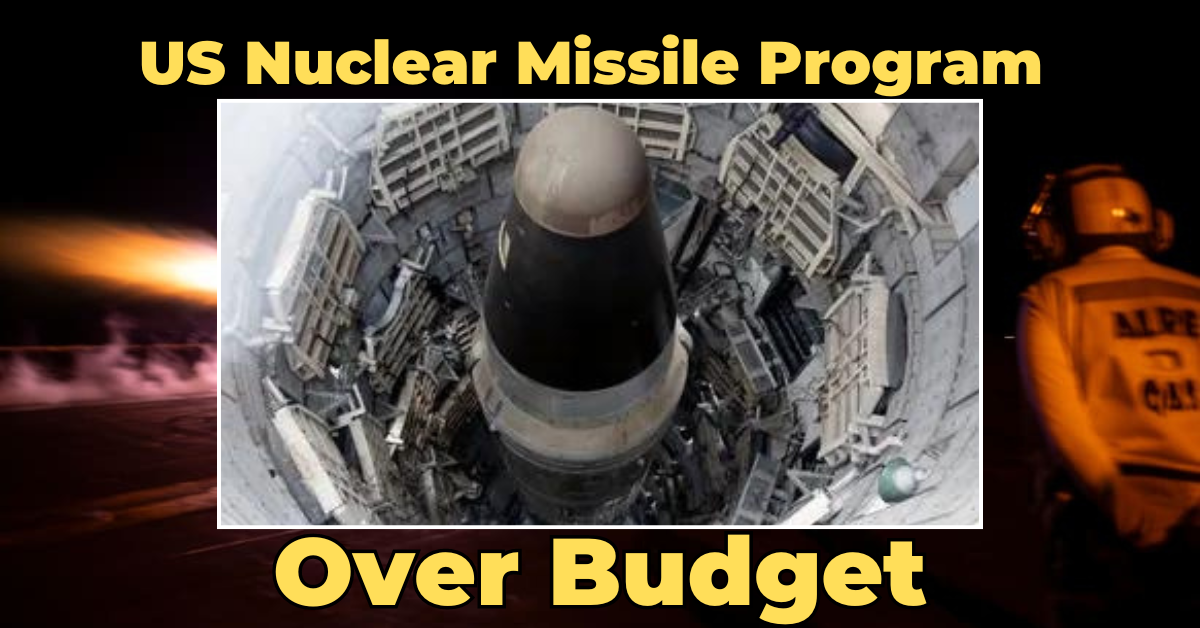US Nuclear Missile Program Over Budget
Sentinel Program Exceeds Budget by $41 Billion, Raising Questions About Cost Management
The US's Sentinel nuclear warhead program is facing intense scrutiny after exceeding its initial budget by a staggering 81%. This translates to a cost overrun of $41 billion, pushing the program's total estimated cost to a hefty $141 billion.
Despite significant cost increases, the Pentagon remains committed to the project, citing the need to modernize the nation's nuclear arsenal in the face of potential threats from China and Russia.
A #Pentagon program to replace some of its aging intercontinental ballistic missiles will be years behind schedule and 81 percent over budget, the #US military says.https://t.co/LGAQZLVMXx
— Al Arabiya English (@AlArabiya_Eng) July 9, 2024
Source: Twitter/AIArabiya_Eng
First Major Upgrade to US Nuclear Triad in Decades
The Sentinel program represents a critical modernization effort for the US nuclear deterrent system. Northrop Grumman is spearheading the development of a new intercontinental ballistic missile (ICBM) the first significant upgrade to the ground-based leg of the US nuclear triad (consisting of land-based missiles, submarine-launched missiles, and strategic bombers) in over 60 years.
The program's scope is vast, encompassing not just the missile itself but also the modernization of 450 launch silos across five states, their associated launch control centers, three nuclear missile bases, and various testing facilities.
This complexity has raised concerns from government watchdogs about the Pentagon's ability to manage such a large-scale project efficiently.
Cost Overruns Trigger Nunn-McCurdy Review
On Monday, military budget officials acknowledged that their initial cost estimates significantly underestimated the true scope of the modernization required.
Bill LaPlante, Undersecretary of Defense for Acquisition and Sustainment, admitted that insufficient knowledge at the outset led to inaccurate cost projections.
The substantial cost overrun has triggered a mandatory Nunn-McCurdy review. This legal provision necessitates a thorough evaluation by the Undersecretary of Defense whenever a program's development costs increase by 25% or more. The review will determine whether the program should proceed or be terminated.
Pentagon Prioritizes Modernization Despite Budgetary Challenges
"We acknowledge the significant cost increases, but we also recognize the risks of not modernizing our nuclear forces," emphasized LaPlante. The Nunn-McCurdy review revealed that the majority of the cost overrun stems from the Sentinel program's command-and-launch segment.
This segment encompasses the intricate communications and control infrastructure designed to facilitate communication between missile launch officers and silo-based missiles for potential launches when ordered.
LaPlante outlined plans to restructure the program to address cost concerns. These measures include scaling back the modernization of launch facilities and exploring more affordable alternatives for replacing the extensive underground cabling network known as the Hicks cables.
The Road Ahead for the US Nuclear Missile Program
General Jim Slife, Air Force Vice Chief of Staff, suggested that cost increases might eventually be offset by budgetary reductions in other programs.
However, the Air Force anticipates most of the Sentinel program's cost increases will occur beyond the next five fiscal years, delaying the need for immediate program cuts.
Read more such news on techinsighttoday
Thank you so much for reading.

